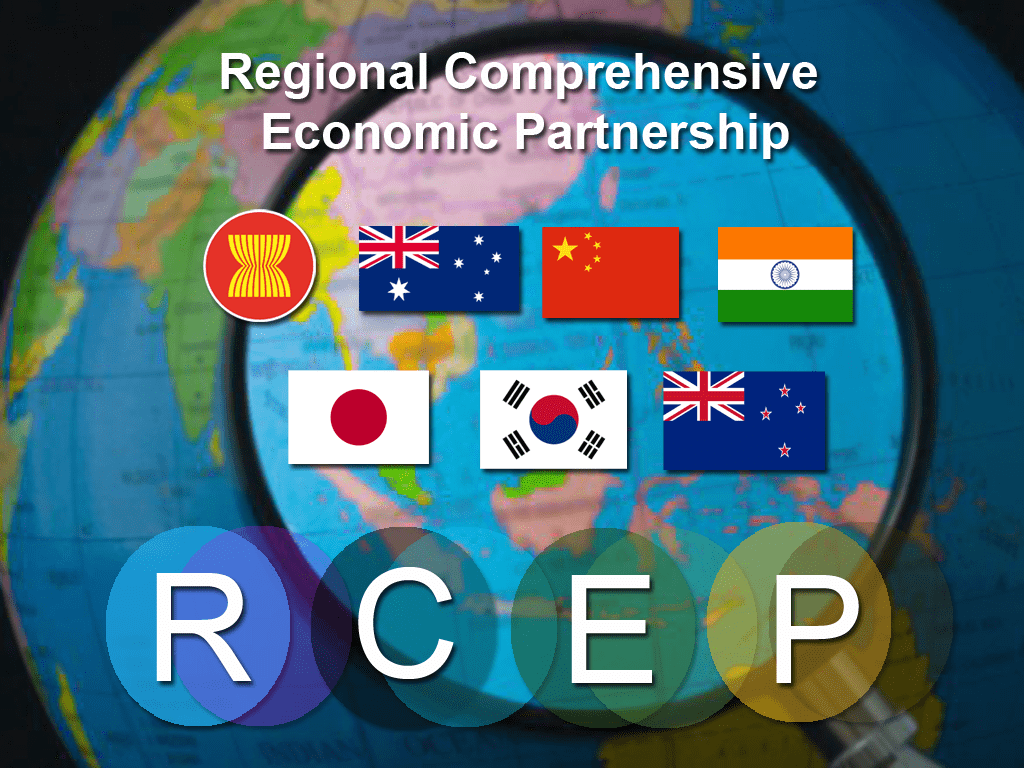China is hurrying to conclude RCEP after the trade war heated up. China tried to gobble up support of other members, particularly ASEAN countries, to make it happen by the end of 2018. India continues to oppose the launch as it is reluctant to reduce duty on 90 percent tariff lines. It also expressed its unhappiness over sidelining market accessibility for service trade, such as IT services and the movement of skilled people, where India has strength. The major fear for India in reducing tariff is that it is already reeling under huge trade deficit with China. A report for Different Truths.
Amidst a media buzz about India withdrawing from the Regional Comprehensive Economic Partnership (RCEP), eyebrows are raised over the timing of the withdrawal and its impact on the country. It is an irony that while RCEP – the largest trade block comprising 16 nations – received a new lease of life after the global trade war heated up, India is contemplating to pull out from the block. Needless to say RCEP went morose after missing two target dates of launching.
Interestingly, China is hurrying to conclude RCEP after the trade war heated up. China tried to gobble up support of other members, particularly ASEAN countries, to make it happen by the end of 2018. India, on the other hand, continues to oppose the launch as it is reluctant to reduce duty on 90 percent tariff lines. It also expressed its unhappiness over sidelining market accessibility for service trade, such as IT services and the movement of skilled people, where India has strength. The major fear for India in reducing tariff is that it is already reeling under huge trade deficit with China.
Against this backdrop, a special committee has been set up to gauge the benefits and loss of RCEP in the wake of the plan to withdraw from RCEP.
RCEP is significant to India, from the angle of both geostrategic and geo-economy. It is the biggest stakeholder in India’s global trade and economy and accounts for 20 percent of India’s and 35 percent of world exports. Today, Indian economy is globally integrated. It looks forward to global value chain (GVC) operation as an important tool for Make in India initiative through Act East policy. RCEP is a vibrant platform to propel the Make in India initiative.
India’s interests in RCEP tapered when concerns were heightened over China’s assertion for aggressive exports to India with Trumps triggering the trade war. India is the biggest market in RCEP. Paranoid over further deepening of trade deficit with China, India was besieged by the thought whether persisting with RCEP would be of any help.
But there is another face of the trade block that could prove beneficial for India in the event of the trade war intensifying as it will give a leeway to India to expand its exports to China. There could be big scope for Indian exports of agricultural and animal husbandry products to China, which can offset the wide trade deficit between the two countries, according to some analysts.
The USA is the main exporter of agricultural products to China. With the imposition of high tariff on US agricultural products by China as a retaliatory measure, India’s market accessibility of agricultural products in China will surge. For instance, China is the biggest importer of soybean in the world and the US is the biggest exporter of it to China. Given the shrinking US exports due to high tariff by China, a new space will be created for India to export to China, owing to duty reduction under RCEP. India is the fourth biggest exporter of soybean meal in the world.
Trade war will augur well for India’s exports of meat to China. China is the second biggest importer of chicken broiler meat in the world and the US is one of the biggest exporters to China. With the demand for US chicken broiler meat receding due to high tariff, there could be new opportunities for Indian exports.
India and the US lock horns over New Delhi’s export subsidies, since these are not WTO compliant. This is because India’s per capita income has exceeded $ 1000 per annum. Amidst the ongoing trade war, India could benefit by diversifying its exports to China along with export subsidies under RCEP.
The Chinese currency yuan is surging in value under US pressure. Yuan appreciated by 22-25 percent over the past three to four years. This let China lose its status as the paradise of low cost manufacturing in the world. To this end, it will be a boon for India to attract Chinese investment in the country. India offers one of the world’s biggest markets, with its sustainable growth trajectory and a large youth population. China is already on the investment binge in India, becoming a driving force for the start-ups and triggering the growth of electronic manufacturing industry.
China can play a significant role in infrastructure investment in India. Last year, China’s Sany Heavy Industry planned an investment of $ 9.8 billion, while Pacific Construction, China Fortune Land Development and Dalian Wanda planned Investments of more than $ 5 billion each
Cross-border e-commerce would be a fertile area for joint cooperation between the two countries. India has become the fastest market in e-commerce, with about 100 million internet connections being added every year. According to a report by Tracxn, a start-up research company in India, a whopping $ 5.2 billion was invested by Chinese internet companies in 2017, like Alibaba, Fosun, Baidu and Tencent. This showed a five-fold jump from $930 million invested in India in 2016.
RCEP can be a template for India to move forward its Act Asia policy. It can be integrated into “regional production networks”, or say, GVC operation in manufacturing. With low labour cost in the country and duty preferences in RCEP, India can provide a base for value chain supply of cheap component and parts to the assembled units in the trade block. Automobile and electronic industries are two areas where India can gain prominence with the advantage of duty preferences and low labour cost. Given these benefits, India’s withdraw from RCEP may not make much sense.
Subrata Majumder
©IPA Service
Photo from the Internet





 By
By

